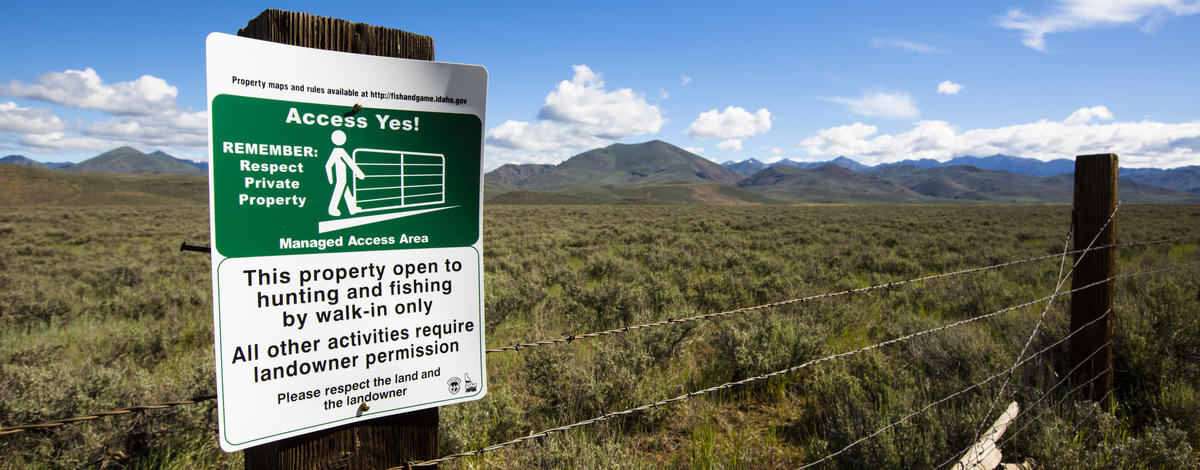The old saying: “One bad apple ruins the whole bushel” is true when it comes to private landowners allowing hunters and anglers on their land.
Damaged fences, dumped garbage, off-roading, unattended campfires, crop and road damage, and shooting firearms too close to livestock or dwelling are just a few of the reasons some landowners restrict access to great hunting and fishing opportunities.
While many landowners are generous in allowing access for those who ask for permission, unfortunately, the careless actions of a few are causing access to quality hunting and fishing to disappear for the rest.
“Most conflicts simply boil down to lack of common sense and respect for the landowner,” says Tom Schrempp, Idaho Fish and Game wildlife biologist based in Salmon. “Every time you are allowed to enter private property, it’s important that you understand the landowner's perspective and always consider the impact of your actions.”
Private landowners, in most cases ranchers or farmers, depends heavily upon their land to make a living. Obviously they have serious concerns when they allow others to use their land. Gates left open, livestock killed accidentally, fires, and damage to roads are just a few of their concerns.
“When these things happen, it’s difficult for a landowner to want to be generous,” Schrempp says.
Responsible behavior is also critical when utilizing private lands enrolled in Fish and Game’s Access Yes! This program is designed to improve access to private land or through private land to public land by compensating willing landowners who provide access. Funds for this program come from hunters and anglers through their license fees.
“It is important to remember that these properties are still private land and are only open to certain activities at certain times of the year,” Schrempp says.
Statewide in 2019, Access Yes! opened 328,066 acres of private land and provided access to 525,115 acres of public land for hunters and anglers. Fish and Game’s Salmon Region is home to two Access YES! Properties, totaling nearly 8,300 acres of private land and over 13,000 acres of public land accessible to sportsmen.
Allowable activities on each Access Yes! property are posted on Fish and Game’s website and in printed guides available at all Fish and Game offices. If an activity is not listed – it is not permitted. And remember, failure to abide by property rules can result in a trespass violation and even being banned from further access.
“Being respectful and knowing and following the landowner’s rules will help ensure access into the future,” Schrempp says. “When in doubt about doing something, always ask the landowner - or don’t do it.”
It could mean the difference between being invited back or closed out forever.

